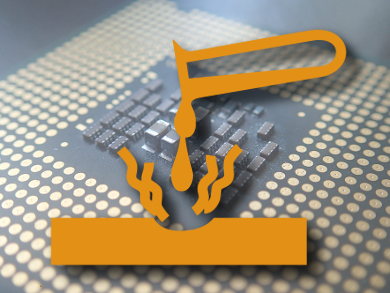Electronic waste is a growing problem due to short device lifecycles, falling prices, and increasing customer demand. Electronics with a self-destruct mechanism could facilitate recycling and waste reduction, as well as be helpful for temporary use cases and data security.
Scott R. White, University of Illinois at Urbana-Champaign, IL, USA, and colleagues have developed electronics with a heat-triggered self-degradation function. They coat magnesium resistors or silicon diodes with a dispersion of microscopic droplets of methanesulfonic acid in wax. When the devices are heated, the wax melts, releasing the acid. The acid then dissolves the electronic components quickly and completely. The trigger temperature can be tuned by using waxes with different melting points.
To remotely trigger the reaction, the researchers embedded a radio-frequency receiver and an inductive heating coil. A radio-frequency signal can then cause the coil to heat up and trigger the device’s destruction on demand. If a cyclic polyphthalaldehyde (cPPA) substrate is used to carry the electronic components, it can be depolymerized by the acid and the entire device can be dissolved.
- Thermally Triggered Degradation of Transient Electronic Devices,
Chan Woo Park, Seung-Kyun Kang, Hector Lopez Hernandez, Joshua A. Kaitz, Dae Seung Wie, Jiho Shin, Olivia P. Lee, Nancy R. Sottos, Jeffrey S. Moore, John A. Rogers, Scott R. White,
Adv. Mater. 2015.
DOI: 10.1002/adma.201501180




